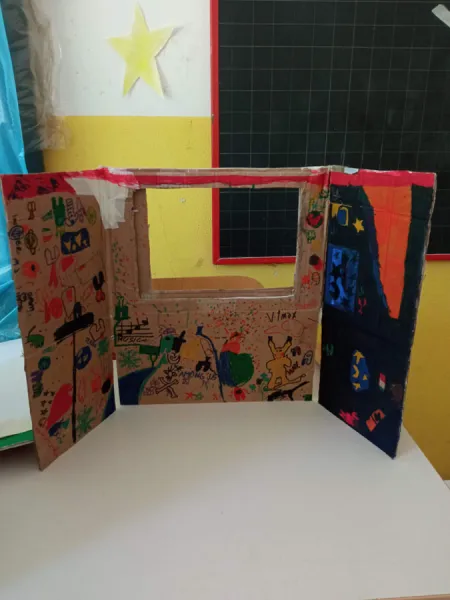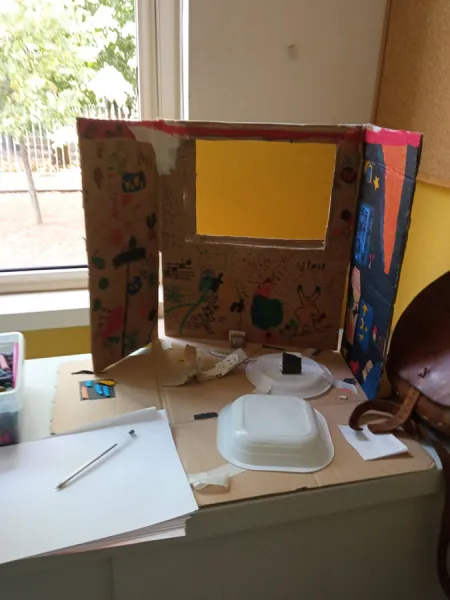Kamishibai 3
In this workshop, in addition to the realization of the story as described in the two previous activities ( e ), the highlight is the construction of a real “cardboard theater”. Children are therefore invited to confront themselves with the creation of a craft object from scratch, thus requiring both the design phase of design and measurement that the realization of cutting, gluing and decoration. Similarly to the two laboratories already mentioned, in this case the pedagogical issues concern the awareness of strengths and weaknesses, the initiative in planning and collaboration in groups. On the didactic side, on the other hand, alongside the creativity on the narrative and figurative level, manual construction is added.
Performance
1) The planning
Taking my kamishibai as a model, the children draw on the recycled cardboards the cuts to be made to create the proscenium, background and scenes of the “paper theatre”. This is an unexpectedly important stage from a pedagogical point of view. An apparently ordinary and mechanical operation such as carrying out measurements gives ample space to the creativity and inventiveness needed to adapt the project to the materials available. It is our difficult task as adults to find the right balance between the instinct to help them and the role of the educator who must intervene as little as possible.
2) Realization
In this phase the action focuses on the cutting and assembly of the various pieces of cardboard that make up the kamishibai. You decide in group the procedure to follow and then with the same attention that you would devote to the assembly instructions of the surprise of a Kinder egg you proceed. Collaboration within the group is at this critical stage.
3) Decoration
Depending on the occasion, the decorations can be free or follow the theme of the story created at the same time as the workshop. Having also cloth, beads or other ornaments you can embellish the kamishibai with these, otherwise cut and glued designs will be more than enough to make your own creation unique. In a school context, the kamishibai built in collaboration with teachers can be used to invent new stories during class.
Quick Info
| Addressed to: |
|
|---|---|
| Age range: | 6-13 years |
| N° partecipants: | Max 20 kids |
| Duration: | 2.5 hours |
| Required material: | Cardboard, glue, scissors, tempera colours, coloured fabrics |
| Place: | Outdoor or indoor |
| Price: | NA |
| Notes: |








